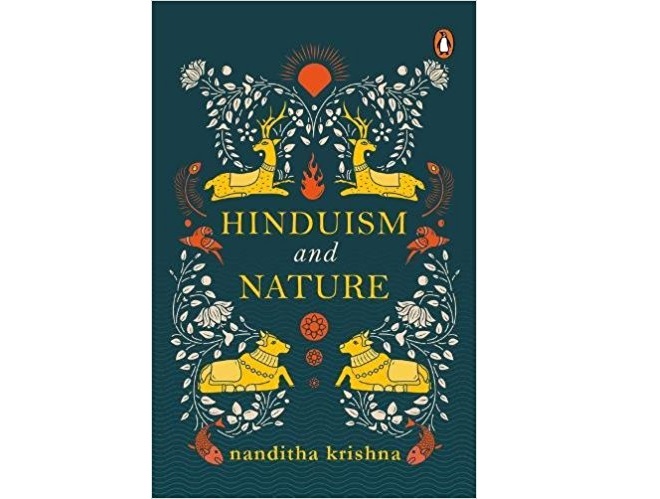Hinduism and Nature by Nanditha Krishna is available for purchase from amazon.
Amidst globalization when we find monolithic religions dominating the world stage, for those looking from outside, Hinduism certainly comes as something strange. The concept of ‘samata’, which means equality, and not just tolerating what others do is certainly a few steps higher. How does Hinduism accommodate so many gods and as strange as it may sound to most monolithic religions, Hinduism has a large plethora of goddesses too!
Nature in itself (called ‘Prakriti’) is treated as a divine power in Hinduism. So a book on how ‘Hinduism and Nature’ are related to each other was something that was amiss. Author Nanditha Krishna is a Ph.D. scholar, so it was not surprising to see her work arranged into chapters looking more like units in a thesis. Rest assured although it starts with an Introduction and ends in a Conclusion, it is not as boring as research papers are generally mistaken to be.
Being an environmentalist herself, the author has been able to provide a lot of insights into groves, orchards and forests, which find mention in not just the religious, but also in the cultural writings of Hinduism. A fine line that separates Hinduism as a culture and as a religion has always been maintained. Author quotes from religious scriptures like Vedas and Puranas, and at the same time, Sangam literature and philosophical texts like Bhagavad Gita are also mentioned.
Using her personal experience, she has been able to showcase how tribal settlements and their traditions help in conservation of forests while increasing load of population is resulting in deforestation. A stronger belief in Hinduism would surely lead to more balance as Hinduism prescribes hell for those who fell green trees while those who plant trees are freed from whatever sins they might have committed. How Vedas and even Bhagavad Gita use trees as a metaphor for the world, indicating their importance is hard to miss for anyone reading on Hinduism.
Hinduism focuses not just on plants and trees, but also advocates compassion towards animals, as a chapter in ‘Hinduism and Nature’ shows. One of the names of the primary three gods of Hinduism is ‘Pashupati’- the Lord of animals. This chapter also has a long list of animals that are considered sacred because they are the vehicles of gods and goddess. The book also refers to tribes like ‘Bishnoi’, who are very environmentally conscious communities.
Traditionally known for chipko movement, where people hugged trees to protect them from being cut, this tribe is also known for its action against film-stars who intended to hunt black bucks. Though personal experiences of the author with such communities are missing, Guru Jamboji, who insisted on equal treatment of nature and human life, finds a mention in the chapter on animals. Again references from many religious texts have been used, as was expected from a scholar writing a book.
Rivers and mountains have recently found space in the itineraries of environmentalists. But, centuries ago itself, seers in Hinduism knew the value of rivers and mountain in maintaining a water cycle. Quoting from different texts, the author brings forth their importance. For practicing Hindus, the rivers like Ganga and Narmada have always been sacred. The book is a good place for to start for someone interested in understanding the essence of Hinduism, especially regarding Hinduism’s approach to ecology.
All states of India have a hill or a range, which is considered sacred. With the growth of mining, increasing human needs, and disconnect from nature, the use of mountains as a resource has turned into abuse. Surely it’s time we looked back to see how our ancestors treated the mountains. The chapter covering hills is short and as a reader I thought it could have been longer. Still when I was expecting just the discussion on Kailash, Himalaya and Vindhyachal, this chapter had a lot more to offer. Conclusion just helps the reader to put the pieces of a jigsaw puzzle together. It aroused a thirst for more information on Hinduism and Nature.
Though the language has been kept lucid, at times when a lot of references have been quoted at the same place, casual readers may find it a bit tedious. Younger readers would miss on the size of the images used. A few lager images, would have added to the aesthetics of the book. If you have adolescent or teenager kids who want to know more on the connection between Hinduism and Nature, this book is a ready reference. Tons of information collected and collated, show how diverse the Hindu traditions are.


